David Crockett, a legend in his time and since, was born in 1786 in East Tennessee.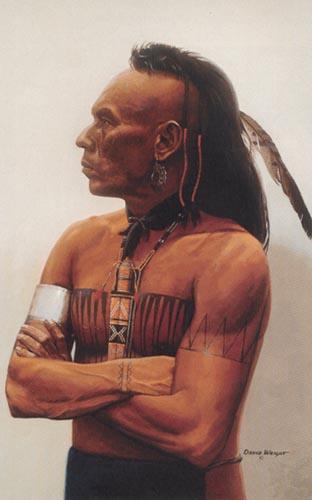 He knew first-hand the brutalities of frontier life. His grandparents were murdered by
He knew first-hand the brutalities of frontier life. His grandparents were murdered by Creek and Cherokee Indians before he was born.
Creek and Cherokee Indians before he was born.  By twelve years old he was bound out to a cattle drover from whom he had to escape through a snowstorm when the drover forcefully kept Davy past the end of his contract. Not having any luck with formal education, Crockett ran away from home at the age of thirteen in 1799.
By twelve years old he was bound out to a cattle drover from whom he had to escape through a snowstorm when the drover forcefully kept Davy past the end of his contract. Not having any luck with formal education, Crockett ran away from home at the age of thirteen in 1799.  Between 1811 and 1813 Crockett fought under General Andrew Jackson in the Creek War.
Between 1811 and 1813 Crockett fought under General Andrew Jackson in the Creek War.  It was his reputation as an Indian fighter and frontiersman that first established his popularity. He used rough, exaggerated images of himself as soldier and hunter to rise to political
It was his reputation as an Indian fighter and frontiersman that first established his popularity. He used rough, exaggerated images of himself as soldier and hunter to rise to political  positions. Although he was admired for being a strong, hard and heroic frontiersman, the obsessive admiration of Davy Crockett was due in large part to his humor.
positions. Although he was admired for being a strong, hard and heroic frontiersman, the obsessive admiration of Davy Crockett was due in large part to his humor. He was charismatic and possessed the mastery of vernacular coupled with common sense that made him a natural storyteller with the power to enthrall his audience and parody his
He was charismatic and possessed the mastery of vernacular coupled with common sense that made him a natural storyteller with the power to enthrall his audience and parody his 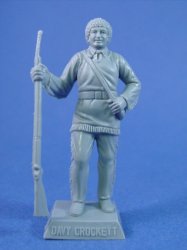 opponents. He served two terms in the Tennessee legislature and was elected to Congress three times. After years as a Democratic Jacksonian, Crockett broke ties with Jackson in 1828 and became a Whig for the remainder of his political career.
opponents. He served two terms in the Tennessee legislature and was elected to Congress three times. After years as a Democratic Jacksonian, Crockett broke ties with Jackson in 1828 and became a Whig for the remainder of his political career.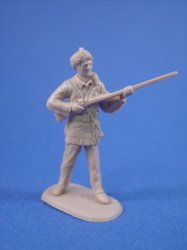
A Narrative of the Life of David Crockett (1834) is the autobiography most likely to be the actual work of Crockett; edited by Thomas Chilton. Much of the other writing attributed to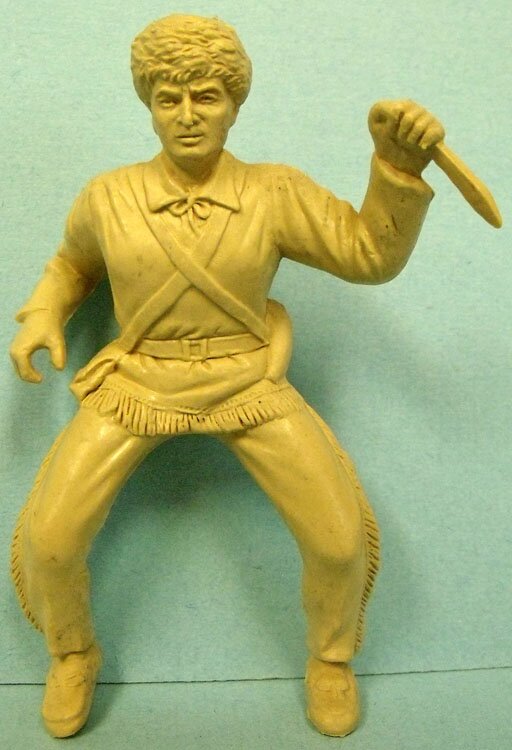 Crockett was actually penned by ghost writers (presumably due to Crockett's lack of formal education) and was approved by Crockett before publication. "Bear Hunting in Tennessee" is a story from
Crockett was actually penned by ghost writers (presumably due to Crockett's lack of formal education) and was approved by Crockett before publication. "Bear Hunting in Tennessee" is a story from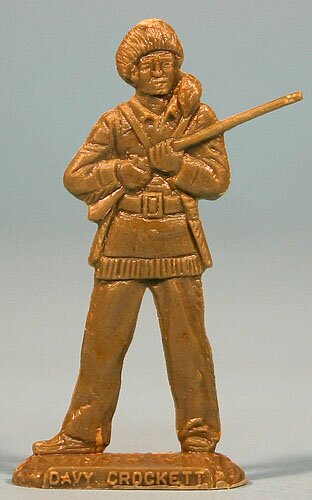 A Narrative of the Life of David Crockett that emphasized Crockett's reputation as a great bear hunter-- one of the first mighty hunters in Southwestern humor. Unlike Thorpe's later
A Narrative of the Life of David Crockett that emphasized Crockett's reputation as a great bear hunter-- one of the first mighty hunters in Southwestern humor. Unlike Thorpe's later 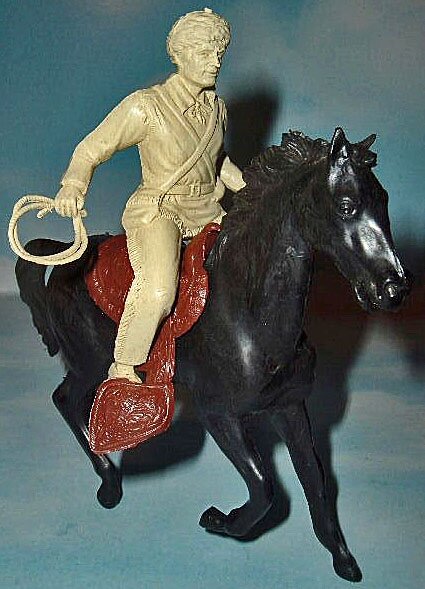 creation of the mighty hunter, Jim Doggett, Crockett's role is used to further the myth that allowed Crockett to become a legend of the old West within his lifetime and for years to come.It was written by an author who falsely attributed the "autobiography" to Crockett (ostensibly to boost sales), Davy's endearing reputation as a teller of tall tales was secured. Crockett eventually did write his autobiography, which also spun some unbelievable yarns. In one chapter,he says he killed over a hundred bears in opne year.
creation of the mighty hunter, Jim Doggett, Crockett's role is used to further the myth that allowed Crockett to become a legend of the old West within his lifetime and for years to come.It was written by an author who falsely attributed the "autobiography" to Crockett (ostensibly to boost sales), Davy's endearing reputation as a teller of tall tales was secured. Crockett eventually did write his autobiography, which also spun some unbelievable yarns. In one chapter,he says he killed over a hundred bears in opne year.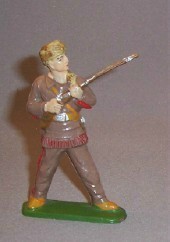
But politically he lost ground.Crockett changed his views toward American Indians. As a Congressman for Tennessee, he came to oppose President Andrew Jackson's land-use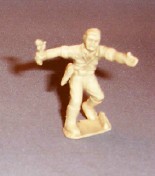 policies. The president's ideas for securing new settlements included the forced removal of American Indians from their tribal lands. Crockett was so vehemently opposed to American Indian removal and land grabbing that he lost the election for his third term in Congress in 1831.
policies. The president's ideas for securing new settlements included the forced removal of American Indians from their tribal lands. Crockett was so vehemently opposed to American Indian removal and land grabbing that he lost the election for his third term in Congress in 1831.
A bit irked that he'd lost his Congressional seat, he left Tennessee, but not before raising a toast to his friends: "You may all go to hell and I will go to Texas," he told them [source: Texas State Library]. He was so caught up in the Texas revolutionary spirit as the former Mexican state struggled for independence (and intrigued by the promise of money from land speculation that a free republic eventually promised), that he volunteered to serve as a member of the rebel militia fighting the Mexican Army there.
Crockett died in Texas the next year during the famous 1836 siege at the Alamo , but his death only brought him more glory. He's been portrayed in depictions of the battle using his trusty musket "Old Betsy"
, but his death only brought him more glory. He's been portrayed in depictions of the battle using his trusty musket "Old Betsy" 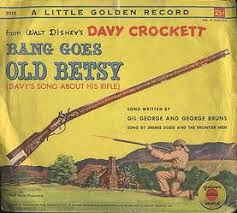 as a club, dealing blows to Mexican soldiers. His soldiering was called into question later from firsthand accounts that told of Crockett being captured rather than dying amid a rubble of
as a club, dealing blows to Mexican soldiers. His soldiering was called into question later from firsthand accounts that told of Crockett being captured rather than dying amid a rubble of  Mexican corpses. But when the diary of a Mexican solider who had fought at the Alamo was discovered in 1975, Crockett's valiant reputation was supported by the soldier's words: Crockett had been a rallying figure for the doomed men at the fort before he was brutally executed at the hands of the Mexicans upon his capture. Anopther report said he disguised himself as a woman and hid in a barrel, (A clash of two Eagles book)
Mexican corpses. But when the diary of a Mexican solider who had fought at the Alamo was discovered in 1975, Crockett's valiant reputation was supported by the soldier's words: Crockett had been a rallying figure for the doomed men at the fort before he was brutally executed at the hands of the Mexicans upon his capture. Anopther report said he disguised himself as a woman and hid in a barrel, (A clash of two Eagles book)
At the Alamo, the bulk of General Santa Anna's army consisted of eight (8) Infantry Battalions divided into five (5) Columns and consisted of some 1,800 men. On paper, each Battalion consisted of eight (8) companies of 80 men each, but desertions and deaths on the march reduced unit strengths considerably. On paper, and not followed at the Alamo, each Battalion was broken down as follows:

 He knew first-hand the brutalities of frontier life. His grandparents were murdered by
He knew first-hand the brutalities of frontier life. His grandparents were murdered by Creek and Cherokee Indians before he was born.
Creek and Cherokee Indians before he was born.  By twelve years old he was bound out to a cattle drover from whom he had to escape through a snowstorm when the drover forcefully kept Davy past the end of his contract. Not having any luck with formal education, Crockett ran away from home at the age of thirteen in 1799.
By twelve years old he was bound out to a cattle drover from whom he had to escape through a snowstorm when the drover forcefully kept Davy past the end of his contract. Not having any luck with formal education, Crockett ran away from home at the age of thirteen in 1799.  Between 1811 and 1813 Crockett fought under General Andrew Jackson in the Creek War.
Between 1811 and 1813 Crockett fought under General Andrew Jackson in the Creek War.  It was his reputation as an Indian fighter and frontiersman that first established his popularity. He used rough, exaggerated images of himself as soldier and hunter to rise to political
It was his reputation as an Indian fighter and frontiersman that first established his popularity. He used rough, exaggerated images of himself as soldier and hunter to rise to political  positions. Although he was admired for being a strong, hard and heroic frontiersman, the obsessive admiration of Davy Crockett was due in large part to his humor.
positions. Although he was admired for being a strong, hard and heroic frontiersman, the obsessive admiration of Davy Crockett was due in large part to his humor. opponents. He served two terms in the Tennessee legislature and was elected to Congress three times. After years as a Democratic Jacksonian, Crockett broke ties with Jackson in 1828 and became a Whig for the remainder of his political career.
opponents. He served two terms in the Tennessee legislature and was elected to Congress three times. After years as a Democratic Jacksonian, Crockett broke ties with Jackson in 1828 and became a Whig for the remainder of his political career.
A Narrative of the Life of David Crockett (1834) is the autobiography most likely to be the actual work of Crockett; edited by Thomas Chilton. Much of the other writing attributed to
 Crockett was actually penned by ghost writers (presumably due to Crockett's lack of formal education) and was approved by Crockett before publication. "Bear Hunting in Tennessee" is a story from
Crockett was actually penned by ghost writers (presumably due to Crockett's lack of formal education) and was approved by Crockett before publication. "Bear Hunting in Tennessee" is a story from A Narrative of the Life of David Crockett that emphasized Crockett's reputation as a great bear hunter-- one of the first mighty hunters in Southwestern humor. Unlike Thorpe's later
A Narrative of the Life of David Crockett that emphasized Crockett's reputation as a great bear hunter-- one of the first mighty hunters in Southwestern humor. Unlike Thorpe's later  creation of the mighty hunter, Jim Doggett, Crockett's role is used to further the myth that allowed Crockett to become a legend of the old West within his lifetime and for years to come.It was written by an author who falsely attributed the "autobiography" to Crockett (ostensibly to boost sales), Davy's endearing reputation as a teller of tall tales was secured. Crockett eventually did write his autobiography, which also spun some unbelievable yarns. In one chapter,he says he killed over a hundred bears in opne year.
creation of the mighty hunter, Jim Doggett, Crockett's role is used to further the myth that allowed Crockett to become a legend of the old West within his lifetime and for years to come.It was written by an author who falsely attributed the "autobiography" to Crockett (ostensibly to boost sales), Davy's endearing reputation as a teller of tall tales was secured. Crockett eventually did write his autobiography, which also spun some unbelievable yarns. In one chapter,he says he killed over a hundred bears in opne year.
But politically he lost ground.Crockett changed his views toward American Indians. As a Congressman for Tennessee, he came to oppose President Andrew Jackson's land-use
 policies. The president's ideas for securing new settlements included the forced removal of American Indians from their tribal lands. Crockett was so vehemently opposed to American Indian removal and land grabbing that he lost the election for his third term in Congress in 1831.
policies. The president's ideas for securing new settlements included the forced removal of American Indians from their tribal lands. Crockett was so vehemently opposed to American Indian removal and land grabbing that he lost the election for his third term in Congress in 1831.A bit irked that he'd lost his Congressional seat, he left Tennessee, but not before raising a toast to his friends: "You may all go to hell and I will go to Texas," he told them [source: Texas State Library]. He was so caught up in the Texas revolutionary spirit as the former Mexican state struggled for independence (and intrigued by the promise of money from land speculation that a free republic eventually promised), that he volunteered to serve as a member of the rebel militia fighting the Mexican Army there.

Crockett died in Texas the next year during the famous 1836 siege at the Alamo
 Mexican corpses. But when the diary of a Mexican solider who had fought at the Alamo was discovered in 1975, Crockett's valiant reputation was supported by the soldier's words: Crockett had been a rallying figure for the doomed men at the fort before he was brutally executed at the hands of the Mexicans upon his capture. Anopther report said he disguised himself as a woman and hid in a barrel, (A clash of two Eagles book)
Mexican corpses. But when the diary of a Mexican solider who had fought at the Alamo was discovered in 1975, Crockett's valiant reputation was supported by the soldier's words: Crockett had been a rallying figure for the doomed men at the fort before he was brutally executed at the hands of the Mexicans upon his capture. Anopther report said he disguised himself as a woman and hid in a barrel, (A clash of two Eagles book)At the Alamo, the bulk of General Santa Anna's army consisted of eight (8) Infantry Battalions divided into five (5) Columns and consisted of some 1,800 men. On paper, each Battalion consisted of eight (8) companies of 80 men each, but desertions and deaths on the march reduced unit strengths considerably. On paper, and not followed at the Alamo, each Battalion was broken down as follows:
Fusileros: There were six (6) companies of Fusileros or Line Infantrymen. They were armed with .75 caliber East India Pattern "Brown Bess" Rifles. ![[image]](http://img.photobucket.com/albums/v291/Nefarioso/361836/mexsgt.jpg) The tail-coat shown above is the Model 1832 pattern. Fusileros also wore medium blue trousers with a red stripe. Footwear consisted of "brogans" (shoes) or sandals
The tail-coat shown above is the Model 1832 pattern. Fusileros also wore medium blue trousers with a red stripe. Footwear consisted of "brogans" (shoes) or sandals ![[image]](http://img.photobucket.com/albums/v291/Nefarioso/361836/heftermounted.jpg)
![[image]](http://img.photobucket.com/albums/v291/Nefarioso/361836/mexsgt.jpg) The tail-coat shown above is the Model 1832 pattern. Fusileros also wore medium blue trousers with a red stripe. Footwear consisted of "brogans" (shoes) or sandals
The tail-coat shown above is the Model 1832 pattern. Fusileros also wore medium blue trousers with a red stripe. Footwear consisted of "brogans" (shoes) or sandals ![[image]](http://img.photobucket.com/albums/v291/Nefarioso/361836/heftermounted.jpg)
Cazadores: There was one (1) company of sharpshooters and they were the finest marksmen in the Battalion. They were supposed to be armed with the .61 caliber Baker ![[image]](http://img.photobucket.com/albums/v291/Nefarioso/361836/dragoon2.jpg) rifles, however, in most cases they were armed as were the Fusileros. The tailcoat shown above is the Model 1833, which is piped in green to indicate the wearer as being in the Cazadore Compania, They also wore "brogans" (shoes) or sandals and, for the most part, wore plain gray trousers.
rifles, however, in most cases they were armed as were the Fusileros. The tailcoat shown above is the Model 1833, which is piped in green to indicate the wearer as being in the Cazadore Compania, They also wore "brogans" (shoes) or sandals and, for the most part, wore plain gray trousers.![[image]](http://img.photobucket.com/albums/v291/Nefarioso/361836/dragoon.jpg)
![[image]](http://img.photobucket.com/albums/v291/Nefarioso/361836/dragoon2.jpg) rifles, however, in most cases they were armed as were the Fusileros. The tailcoat shown above is the Model 1833, which is piped in green to indicate the wearer as being in the Cazadore Compania, They also wore "brogans" (shoes) or sandals and, for the most part, wore plain gray trousers.
rifles, however, in most cases they were armed as were the Fusileros. The tailcoat shown above is the Model 1833, which is piped in green to indicate the wearer as being in the Cazadore Compania, They also wore "brogans" (shoes) or sandals and, for the most part, wore plain gray trousers.![[image]](http://img.photobucket.com/albums/v291/Nefarioso/361836/dragoon.jpg)
Granaderos: There was one (1) company of Granaderos or Grenadiers, which consisted of the older veterans who served as the Battalion's reserve force. They were armed with .75![[image]](http://img.photobucket.com/albums/v291/Nefarioso/Alamo/soldado.jpg) caliber East India Pattern "Brown Bess" Rifles and their tailcoat, shown above, is also the Model 1833. They also wore "brogans" (shoes) or sandals and, by regulation, medium blue trousers with a red stripe
caliber East India Pattern "Brown Bess" Rifles and their tailcoat, shown above, is also the Model 1833. They also wore "brogans" (shoes) or sandals and, by regulation, medium blue trousers with a red stripe![[image]](http://img.photobucket.com/albums/v291/Nefarioso/Alamo/soldado2.jpg) .
.
![[image]](http://img.photobucket.com/albums/v291/Nefarioso/Alamo/soldado.jpg) caliber East India Pattern "Brown Bess" Rifles and their tailcoat, shown above, is also the Model 1833. They also wore "brogans" (shoes) or sandals and, by regulation, medium blue trousers with a red stripe
caliber East India Pattern "Brown Bess" Rifles and their tailcoat, shown above, is also the Model 1833. They also wore "brogans" (shoes) or sandals and, by regulation, medium blue trousers with a red stripe![[image]](http://img.photobucket.com/albums/v291/Nefarioso/Alamo/soldado2.jpg) .
. Zapadores: These were General Santa Anna's elite Sappers, that were held in reserve and then finally ordered into the assault to "bolster" the reluctant troops during the final ![[image]](http://img.photobucket.com/albums/v291/Nefarioso/Alamo/soldado3.jpg) assault on the North Wall. Only some 180 of these troops were at the siege and no doubt "encouraged" the soldadoes
assault on the North Wall. Only some 180 of these troops were at the siege and no doubt "encouraged" the soldadoes ![[image]](http://img.photobucket.com/albums/v291/Nefarioso/Alamo/soldado4.jpg) forward with a little "prodding" at the point of a bayonet. Recent information indicates that some of the Zapadores wore
forward with a little "prodding" at the point of a bayonet. Recent information indicates that some of the Zapadores wore ![[image]](http://img.photobucket.com/albums/v291/Nefarioso/Alamo/soldado5.jpg) "barracks" caps, and white leather aprons, in lieu of the standard attire, and carried axes in order to chop through the adobe
"barracks" caps, and white leather aprons, in lieu of the standard attire, and carried axes in order to chop through the adobe![[image]](http://img.photobucket.com/albums/v291/Nefarioso/Alamo/soldado6.jpg) walls, at the northwest corner of Alamo, and in order to gain entry. Back of Tunic: Rear view of the tail-coat and barracks cap, the latter which was commonly worn by Zapadores (elite Mexican Sappers) during trenching operations and the final Alamo assault.
walls, at the northwest corner of Alamo, and in order to gain entry. Back of Tunic: Rear view of the tail-coat and barracks cap, the latter which was commonly worn by Zapadores (elite Mexican Sappers) during trenching operations and the final Alamo assault. ![[image]](http://img.photobucket.com/albums/v291/Nefarioso/Alamo/jensen1.jpg)
![[image]](http://img.photobucket.com/albums/v291/Nefarioso/Alamo/soldado3.jpg) assault on the North Wall. Only some 180 of these troops were at the siege and no doubt "encouraged" the soldadoes
assault on the North Wall. Only some 180 of these troops were at the siege and no doubt "encouraged" the soldadoes ![[image]](http://img.photobucket.com/albums/v291/Nefarioso/Alamo/soldado4.jpg) forward with a little "prodding" at the point of a bayonet. Recent information indicates that some of the Zapadores wore
forward with a little "prodding" at the point of a bayonet. Recent information indicates that some of the Zapadores wore ![[image]](http://img.photobucket.com/albums/v291/Nefarioso/Alamo/soldado5.jpg) "barracks" caps, and white leather aprons, in lieu of the standard attire, and carried axes in order to chop through the adobe
"barracks" caps, and white leather aprons, in lieu of the standard attire, and carried axes in order to chop through the adobe![[image]](http://img.photobucket.com/albums/v291/Nefarioso/Alamo/soldado6.jpg) walls, at the northwest corner of Alamo, and in order to gain entry. Back of Tunic: Rear view of the tail-coat and barracks cap, the latter which was commonly worn by Zapadores (elite Mexican Sappers) during trenching operations and the final Alamo assault.
walls, at the northwest corner of Alamo, and in order to gain entry. Back of Tunic: Rear view of the tail-coat and barracks cap, the latter which was commonly worn by Zapadores (elite Mexican Sappers) during trenching operations and the final Alamo assault. ![[image]](http://img.photobucket.com/albums/v291/Nefarioso/Alamo/jensen1.jpg)
Many of the companies, that assaulted the Alamo, wore summer weight white linen or cotton "fatigue" trousers, in lieu of those mentioned above, despite the bitterly freezing cold weather that plagued the Mexican Army on their over 300 mile forced march to San Antonio de Bexar. Additionally, during the early morning assault on the final day that commenced at 0500 hours (5 AM) in the morning, many of the troops wore sandals and all were ordered to discard their packs, blankets and overcoats. ![[image]](http://img.photobucket.com/albums/v291/Nefarioso/Alamo/POFUNIFS.jpg)
![[image]](http://img.photobucket.com/albums/v291/Nefarioso/Alamo/POFUNIFS.jpg)
It should be noted that, for the most part, the Mexican Army, that made the long march to Texas and dutifully engaged the defenders at the Alamo, were not the untrained gaggle of simple minded peasants that Hollywood had portrayed them until recently. Neither were they more sadistic, more savage or more blood-thirsty
that Hollywood had portrayed them until recently. Neither were they more sadistic, more savage or more blood-thirsty  then their Texas foe, as the latter so clearly proved at the battle of San Jacinto a couple of months after the Alamo siege. We can, and probably will, debate forever who was wrong and who
then their Texas foe, as the latter so clearly proved at the battle of San Jacinto a couple of months after the Alamo siege. We can, and probably will, debate forever who was wrong and who was right during the Texas War of Independence. But through all of the arguments only one thing must remain perfectly clear if nothing else
was right during the Texas War of Independence. But through all of the arguments only one thing must remain perfectly clear if nothing else  does. The Mexican Army was, arguably and undeniably, a professional army in their own right. They fought bravely and were committed to their "cause" no less heroically and with no less passion than the Texian defenders who opposed them from within the battered walls of the Alamo.The standard issue musket carried by the Mexican soldiers at the Alamo was the 3rd Model (East India Pattern) British "Brown Bess" smoothbore musket (above). Considered "surplus" by the British, these weapons were the primary weapon issued in Santa Anna's army and were of a 75-caliber with a length of 54 inches and a weight of about 9 pounds. The weapon also had a 15" long, socket bayonet that was secured to the weapon by the front sight blade. In the hands of an untrained soldier, it was difficult to hit a target passed about 50 yards and had a 40% misfire rate due to poor powder. These limitations, however, did not concern General Santa Anna, sinceaccuracy stood second to the deadly bayonet charge. The lack of marksmanship training, poor quality powder and the limited visibility in the pre-dawn darkness of 6 March 1836 may all have contributed to the weapons less than satisfactory performance during that chilly predawn assault. The Mexican Cazadores (Sharpshooters) are believed to have carried the Model 1806 British Baker Rifled Musket. It had a 30.5" barrel with a rifled .615 caliber bore consisting of seven square cut grooves which completed a mere quarter turn along the length of the barrel. A 22.5 inch short sword, which hooked on to the side of the barrel, served as a bayonet. It was in production from 1800 to 1838. Accurate to about 175 yards, it could be loaded while prone and was also sufficiently robust to take a bayonet and withstand the rigors of hand-to-hand combat during a lengthy period of service. Excavations, conducted south of the compound wall in February 1985 by archeologists from the University of Texas at San Antonio, revealed that Baker Rifle were used by some of the Mexican soldiers at the Alamo.
does. The Mexican Army was, arguably and undeniably, a professional army in their own right. They fought bravely and were committed to their "cause" no less heroically and with no less passion than the Texian defenders who opposed them from within the battered walls of the Alamo.The standard issue musket carried by the Mexican soldiers at the Alamo was the 3rd Model (East India Pattern) British "Brown Bess" smoothbore musket (above). Considered "surplus" by the British, these weapons were the primary weapon issued in Santa Anna's army and were of a 75-caliber with a length of 54 inches and a weight of about 9 pounds. The weapon also had a 15" long, socket bayonet that was secured to the weapon by the front sight blade. In the hands of an untrained soldier, it was difficult to hit a target passed about 50 yards and had a 40% misfire rate due to poor powder. These limitations, however, did not concern General Santa Anna, sinceaccuracy stood second to the deadly bayonet charge. The lack of marksmanship training, poor quality powder and the limited visibility in the pre-dawn darkness of 6 March 1836 may all have contributed to the weapons less than satisfactory performance during that chilly predawn assault. The Mexican Cazadores (Sharpshooters) are believed to have carried the Model 1806 British Baker Rifled Musket. It had a 30.5" barrel with a rifled .615 caliber bore consisting of seven square cut grooves which completed a mere quarter turn along the length of the barrel. A 22.5 inch short sword, which hooked on to the side of the barrel, served as a bayonet. It was in production from 1800 to 1838. Accurate to about 175 yards, it could be loaded while prone and was also sufficiently robust to take a bayonet and withstand the rigors of hand-to-hand combat during a lengthy period of service. Excavations, conducted south of the compound wall in February 1985 by archeologists from the University of Texas at San Antonio, revealed that Baker Rifle were used by some of the Mexican soldiers at the Alamo.
 that Hollywood had portrayed them until recently. Neither were they more sadistic, more savage or more blood-thirsty
that Hollywood had portrayed them until recently. Neither were they more sadistic, more savage or more blood-thirsty  then their Texas foe, as the latter so clearly proved at the battle of San Jacinto a couple of months after the Alamo siege. We can, and probably will, debate forever who was wrong and who
then their Texas foe, as the latter so clearly proved at the battle of San Jacinto a couple of months after the Alamo siege. We can, and probably will, debate forever who was wrong and who was right during the Texas War of Independence. But through all of the arguments only one thing must remain perfectly clear if nothing else
was right during the Texas War of Independence. But through all of the arguments only one thing must remain perfectly clear if nothing else  does. The Mexican Army was, arguably and undeniably, a professional army in their own right. They fought bravely and were committed to their "cause" no less heroically and with no less passion than the Texian defenders who opposed them from within the battered walls of the Alamo.The standard issue musket carried by the Mexican soldiers at the Alamo was the 3rd Model (East India Pattern) British "Brown Bess" smoothbore musket (above). Considered "surplus" by the British, these weapons were the primary weapon issued in Santa Anna's army and were of a 75-caliber with a length of 54 inches and a weight of about 9 pounds. The weapon also had a 15" long, socket bayonet that was secured to the weapon by the front sight blade. In the hands of an untrained soldier, it was difficult to hit a target passed about 50 yards and had a 40% misfire rate due to poor powder. These limitations, however, did not concern General Santa Anna, sinceaccuracy stood second to the deadly bayonet charge. The lack of marksmanship training, poor quality powder and the limited visibility in the pre-dawn darkness of 6 March 1836 may all have contributed to the weapons less than satisfactory performance during that chilly predawn assault. The Mexican Cazadores (Sharpshooters) are believed to have carried the Model 1806 British Baker Rifled Musket. It had a 30.5" barrel with a rifled .615 caliber bore consisting of seven square cut grooves which completed a mere quarter turn along the length of the barrel. A 22.5 inch short sword, which hooked on to the side of the barrel, served as a bayonet. It was in production from 1800 to 1838. Accurate to about 175 yards, it could be loaded while prone and was also sufficiently robust to take a bayonet and withstand the rigors of hand-to-hand combat during a lengthy period of service. Excavations, conducted south of the compound wall in February 1985 by archeologists from the University of Texas at San Antonio, revealed that Baker Rifle were used by some of the Mexican soldiers at the Alamo.
does. The Mexican Army was, arguably and undeniably, a professional army in their own right. They fought bravely and were committed to their "cause" no less heroically and with no less passion than the Texian defenders who opposed them from within the battered walls of the Alamo.The standard issue musket carried by the Mexican soldiers at the Alamo was the 3rd Model (East India Pattern) British "Brown Bess" smoothbore musket (above). Considered "surplus" by the British, these weapons were the primary weapon issued in Santa Anna's army and were of a 75-caliber with a length of 54 inches and a weight of about 9 pounds. The weapon also had a 15" long, socket bayonet that was secured to the weapon by the front sight blade. In the hands of an untrained soldier, it was difficult to hit a target passed about 50 yards and had a 40% misfire rate due to poor powder. These limitations, however, did not concern General Santa Anna, sinceaccuracy stood second to the deadly bayonet charge. The lack of marksmanship training, poor quality powder and the limited visibility in the pre-dawn darkness of 6 March 1836 may all have contributed to the weapons less than satisfactory performance during that chilly predawn assault. The Mexican Cazadores (Sharpshooters) are believed to have carried the Model 1806 British Baker Rifled Musket. It had a 30.5" barrel with a rifled .615 caliber bore consisting of seven square cut grooves which completed a mere quarter turn along the length of the barrel. A 22.5 inch short sword, which hooked on to the side of the barrel, served as a bayonet. It was in production from 1800 to 1838. Accurate to about 175 yards, it could be loaded while prone and was also sufficiently robust to take a bayonet and withstand the rigors of hand-to-hand combat during a lengthy period of service. Excavations, conducted south of the compound wall in February 1985 by archeologists from the University of Texas at San Antonio, revealed that Baker Rifle were used by some of the Mexican soldiers at the Alamo. As for the Alamo defenders (Texians), which consisted of some 189 Anglo and Mexican patriots (yes there were Mexicans who fought with the Texians), they were armed with a variety of weapons ranging from shotguns to flintlock pistols to tomahawks Pennsylvania .50 caliber rifled muskets. Most common, especially in the hands of the New Orleans Grays, was the Model 1803 and Model 1816 US Flintlock Rifles, one of which is pictured above. Both were made by Harpers Ferry Armory. Then Model 1803 had a 35½" browned octagon to round .54 caliber barrel, a flat blade brass front sight and an open blued steel rear sight. The weapon also had a steel ramrod with brass end and a walnut half stock with a case-hardened lock plate. The Model 1816 US Flintlock Musket had a 42" round .69 caliber smoothbore barrel without a front or rear sight. It had a steel ramrod with button shaped head and a bayonet lug on top of barrel at muzzle. It was a three banded weapon with iron mountings, 57" stock to barrel tip and weight of ¾ lbs.
The typical Pennsylvania/Kentucky Rifle was .50 caliber, made of curly maple full stock and sported a 42 to 46 inch barrel. A crescent-shaped buttplate, patchbox and cheek piece were also common to this weapon. It is believed that David Crockett and the 14 members of the Tennessee Mounted Volunteers used these rifles as they manned their position in the southern palisade of the Alamo. In the capable hands of an expert, the Pennsylvania long rifle could hit a target at a range of out to 250 yards. As for flintlock pistols, many of the Alamo defenders carried at least two, however, their maximum effective range of 30 yards made them impractical except at close quarters. Much lore circles about as to the "pounding" rendered upon the Alamo by the Mexican artillery prior to the morning of the final assault. In truth, on the morning of the final assault Santa Anna ordered that no cannons fire out of feat of awaking the sleeping defenders. Prior to that, Santa Anna only had light cannons, his heavier pieces not arriving until the day after the battle. During the entire 12 days before the assault, he had but 6 small caliber field guns (6-pounders) and two howitzers to batter down the Alamo walls, none of which were effective and no casualties were inflicted on the defenders. Outside of lobbing "grenades" into the compound plaza, the main purpose served by Santa Anna's "artillery" was to wear the defenders down via almost constant harassing fire. If the artillery can lay claim to inflicting mass casualties than it was the defender's cannons that laid waste to whole lines of men rather then those of the Mexican. Army. Of the assaulting force, some believe that the casualties could have been as high as 600 killed and wounded. There can be little doubt that given the darkness, the limited number of defenders (about 189) and the swiftness of the assault (the Mexicans crept silently to with about 100 yards from the Alamo walls undetected), the weapon most responsible for "cutting down whole companies" of Mexican soldiers had to be the defender's cannons firing grapeshot at point blank range. Sleepy, stressed out Texians firing muskets in the darkness may have accounted for a comparatively few casualties. Even if a good number of Mexican soldiers were shot by their own excited comrades, in the heat of the assault, this simply could not come close to explaining the losses sustained in so short a brief assault (about 90 minutes from start to finish). Within the Alamo walls there is believed to have been 21 cannons of various sizes, although Colonel James McNeal reported that there were 24 cannons in the mission. The majority of the cannons used by the defenders were captured in December 1835 when Mexican General Perfecto Co's surrendered the Alamo to the mission to Texians prior to his departure from San Antonio de Bexar. They consisted of the famous 18 pounder, 1 x iron 16-pounder, 1 x iron 12-pound gunnade, 1 x 9"pedrero (fired stone balls) , 2 x iron 8-pound guns, 6 x 6-pounders, 3 x iron 4-pounders, 4 x bronze 4-pound cannons and 2 x 2-pounders. The other three cannons were not used and were lying in the courtyard. There is little doubt that in the first few minutes of the assault the cannons reeked pure havoc on the attacking Mexican soldiers. However, after the initial volleys were fired the Mexicans were at the foot of the outside walls and the barrels of the cannons could not be depressed enough to fire at their targets. Additionally, the Texans were so busy trying to the Mexican soldiers from climbing the walls that they did not have time to reload their cannons and the firepower advantage of the defenders cannons was over within the first few moments of the attack.

No comments:
Post a Comment